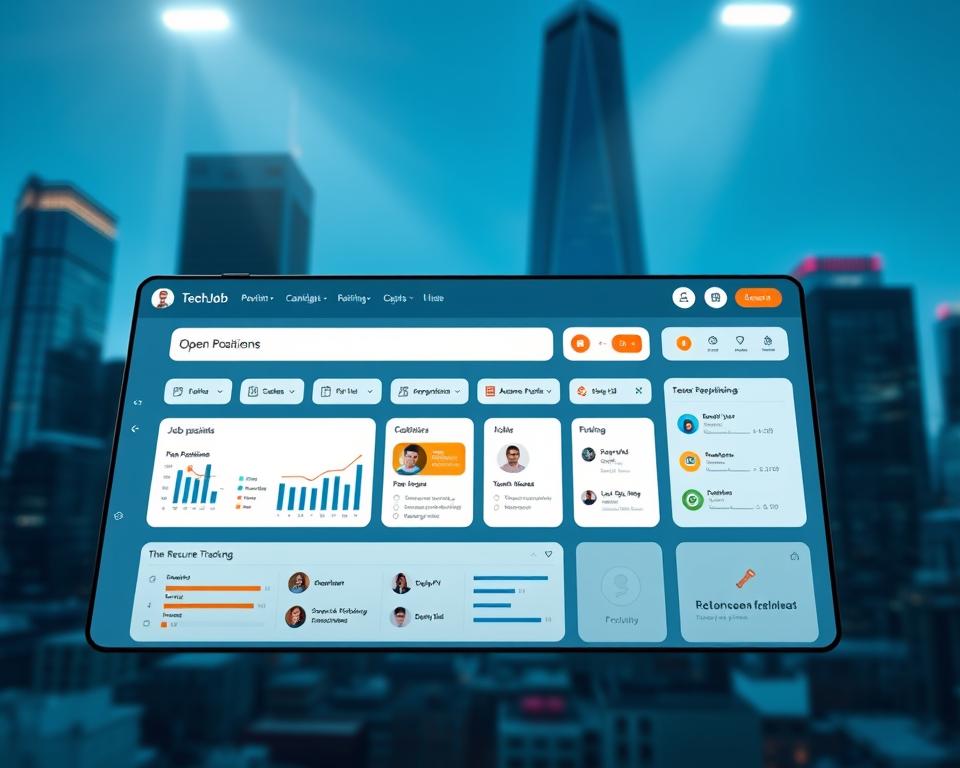Expert Door and Glass Repair Services Near You
Each year, close to 20% of American homes deal with glass or door issues. Most requests arrive from local neighbors seeking rapid, trustworthy repairs. Glass and Doors Region helps homeowners, businesses, and car owners all over the United States. We deliver professional glass repair and door/glass solutions to restore safety and improve energy efficiency.
Glass and Doors Region is your trusted choice for local 2 hour glass repair near me. Our services include residential door repair, storefront glazing, office glass service, window glass replacement, emergency door fixes, and automotive glass. Count on priority scheduling, 24/7 assistance, and mobile crews for rapid on-site work.
Selecting a nearby team shortens response time, expertise on building codes in your area, and insight into climate-related wear on doors and windows. Our main aims are to secure homes from break-ins, update homes with energy-saving windows, replace broken glass in stores to keep them running, and fix or replace windshields needing ADAS calibration when necessary.
Critical Summaries
- Glass and Doors Region provides local door and glass repair across the United States.
- Residential, commercial, 24/7 emergency, and automotive glass services are offered.
- Local teams offer faster response times and familiarity with regional codes.
- We provide on-site auto glass replacement plus ADAS calibration when required.
- Priority scheduling and 24/7 emergency service help protect safety and business continuity.

Why Pick Local Professional Door & Glass Repair
When you’re dealing with a broken lock or a cracked window, quick help from your local area is crucial. Picking a team close by slashes waiting times for evaluations and any necessary follow-ups. Prompt response following intrusion or severe weather limits further damage. It also gets your safety back.
Nearby know-how and rapid arrival
Area teams understand code nuances and source materials quickly. Their familiarity often supports same-day evaluation if parts are available. For companies, that allows quick after-hours securing. It minimizes closure periods.
Certified pros and proven materials
Licensed technicians follow recognized repair/installation standards. They use reliable brands like Guardian and PPG for new glass. Correct hardware and glazing reduce rework. They help repairs last longer.
Clear pricing and backed workmanship
Reputable providers present transparent quotes with no hidden fees. They also promise their work will be right. Membership deals and special plans offer customers early booking and lower prices. You get told if prices are going up and agree to it before more work is done.
| Advantage | What You Get | Why It Matters |
|---|---|---|
| Speedy arrival | Same-day checks and priority after-hours dispatch | Limits damage, restores security quickly |
| Qualified technicians | Licensed technicians, certified glass handling | Safer installs, fewer repeat repairs |
| Industry-grade components | Industry-standard glass and door hardware | Longer-lasting repairs, better performance |
| Upfront pricing | Written final estimates, transparent pricing | Predictable billing, no surprises |
| Service warranty | Workmanship promises and follow-up support | Confidence and accountability |
door and glass repair: What to Expect from a Professional Service
With door and glass repair, expect a defined workflow. It protects safety and preserves property value. A trained technician logs damage and hazards, then recommends next steps. This way, the repair work is swift and further damage is avoided.
Thorough on-site assessment and damage evaluation
Pros examine cracks, check frame plumb/square, and review weather seals. They identify hazards—shattered glass, failed locks—and determine if immediate board-up or repair is required. This helps you make informed decisions quickly.
Custom repair plans and written estimates
Post-assessment, a tailored plan is created to fit your goals and budget. They give you a precise estimate that covers the work, materials, and how long it’ll take. The initial estimate is the price you start with, unless you want more work or upgrades done.
Use of industry-standard glass and door hardware
Pros install high-quality glass, seals, and hardware meeting safety and efficiency benchmarks. For vehicles, they pick the right windshield replacements and do necessary ADAS calibrations. Better materials cut repeat work and keep warranties intact.
| Phase | Process | Outcome |
|---|---|---|
| Initial visit | Comprehensive inspection with hazard documentation | Identifies immediate risks and sets repair priorities |
| Quote | Documented pricing with scope and schedule | Ensures pricing clarity and control |
| Components | Code-rated glass, seals, and hardware | Ensures safety, performance, and warranty compliance |
| Next steps | Procurement and scheduling when special items are needed | Keeps the project on track when special materials are required |
Residential glass & door repair services
Homes need quick fixes when doors or glass break. Pros restore function, improve efficiency, and refresh appearance. They manage minor fixes through custom projects to avoid larger problems later.
Frequent door issues at home and remedies
Sticking/misaligned doors usually stem from humidity or settling. Workers shave door frames, tweak hinges, and get frames right to make doors work smoothly again. Replacing weatherstripping keeps drafts out and cuts energy bills.
Repairing/replacing hinges and locks strengthens security while preserving appearance. Smoother patio doors require adjustments and track cleaning. Pet door installs/repairs maintain comfort and enable easy pet access.
Window replacement options for fogging and damage
Fogging between panes indicates seal failure. Experts check for leaks, bad seals, and frame problems before suggesting new windows. New insulated windows make views clear again and help save on energy.
Lead time varies by glass type and frame—typically days to weeks. Generally, labor and materials carry a defined warranty for peace of mind.
Shower glass, mirrors, and interior upgrades
Custom shower enclosures refresh baths with clear, sliding, or semi-framed designs. Hardware and glass are coordinated to your style. Technicians meet safety codes with tempered glass from brands such as Kohler and DreamLine.
Custom mirrors and tabletops expand visual space and add durability. Glass rails mix safety with a modern look. Sales and discounts might lower prices for these projects, making them more affordable.
| Home Service | Frequent Issue | Usual Timeline | Typical Warranty |
|---|---|---|---|
| Door service (residential) | Misalignment and lock failures | Same-day to three days | 90 days to 1 year |
| Glass pane replacement | Cracks, seal failure, drafts | 3–21 days | Material-based: 1–10 years |
| Double-pane restoration | Condensation between panes, reduced insulation | 1 week to 3 weeks | 2 to 5 years |
| Shower glass systems | Aged hardware, leaks, style refresh | 1–4 weeks | 1 to 5 years |
| Interior mirrors/rails | Mirrors, tabletops, railings | 3 days to 3 weeks | 1–3 years |
Commercial glass repair and storefront glass repair
Companies rely on prompt, reliable glazing to safeguard people and goods. After break-ins, vandalism, or accidents, speed is critical. An approach combining immediate securing, staged repair, and follow-up shortens downtime.
Commercial service plans deliver quick scheduling and long-term solutions. They reduce downtime and streamline repair plus insurance handling. Getting a commercial account means easier billing and services for many locations.
Priority after-hours response for businesses
If a business has broken glass after closing, an urgent after-hours response sends a technician right away. We evaluate, mitigate risks, and propose interim solutions. Rapid assistance secures the area and speeds staff return.
Board-up service and staged repairs to secure property
Board-up services quickly protect after a break-in or major damage. Crews clean debris, install boards, and secure entries to prevent further loss. Staging repairs keeps business running during fabrication lead times.
Commercial account benefits and membership pricing
Business accounts offer discounted board-ups, maintenance, and quick response. This special pricing reduces costs for frequent needs and simplifies bills for businesses with many places. Big companies and small shops use these plans to stay open and safe.
Round-the-clock glass and door emergency service
Post break-in, storm, or mishap, immediate response is vital for safety and mitigation. Techs respond rapidly, assess hazards, remove debris, and select interim or final solutions.
Emergency examples and initial steps
Typical emergencies include storefront breaks, auto glass damage, and warped frames. Techs identify hazards and secure the site first. They clean up glass, protect any openings, and record the damage for insurance.
How professionals secure the scene and prevent further damage
Teams install boards or temp glazing and verify lock integrity. Cleanup follows to prevent injury and secondary damage. This approach keeps the area safe while planning for a final fix.
Setting next steps and sourcing parts
After making the site safe, technicians check their supplies. With parts available, they perform immediate repairs. If required items aren’t on hand, they place orders and arrange follow-up. Joining a membership plan might get you faster service and save you money for future emergencies.
Emergency door/window service reduces wait time and simplifies insurance. Having access to help any time, day or night, weekends included, offers peace of mind to property owners when unexpected issues happen.
Energy-efficient window glass replacement
Old windows often lead to higher bills and discomfort at home. A checkup can uncover drafts, seal failure, and fogging, pointing to insulation issues. Experts can find air leaks and check seals to find what’s wrong.
Identifying drafts, cracked seals, and foggy panes
Drafts often start from old weatherstripping or gaps in frames. Failed seals admit moisture, creating fog and reducing insulation. Early detection reduces heat loss and expenses.
Options for double-pane replacement and energy-saving glass
Low-E glazing options reflect heat for better performance. Argon/krypton fills enhance thermal performance. Severely damaged frames may require full frame replacement over sash-only.
There are multiple efficient glazing types to choose from. Ready-made units are quick to install. Custom units provide tailored benefits but need longer lead times. Match glass choice to climate and orientation.
Costs, timelines, and warranty expectations
Pricing depends on window size, glazing type, and scope. Stock sizes allow quicker turnarounds. Custom fabrication extends timelines. Quotes will itemize parts and labor.
Warranties usually cover the materials and labor for a certain time. Special deals or membership plans can reduce costs and help with quicker appointments. Clarity on price and warranty helps you plan.
Auto glass and specialty glazing services
Trust experienced crews with auto and specialty glazing. Act fast on chips to avoid complete windshield changes. If replacement is needed, it’s installed correctly to keep safety systems working.
Windshield chip/crack repair begins with a rapid damage check. Small chips are often repairable, restoring strength and clarity. For larger cracks, a new windshield is installed with proper adhesive for safety and quality.
Getting your windshield replaced at home or work is super handy. Businesses with many cars get quick on-site help, reducing wait times. Post-replacement ADAS recalibration (cameras/sensors) is critical. This ensures features like lane assist and auto brake work right.
Beyond cars, we cover buses, tractors, and heavy machinery. We deliver maintenance, rapid repairs, and recordkeeping for fleet managers. Our mobile units carry broad inventory to finish jobs quickly and return assets to duty.
We also fabricate/fit specialty glass for railings, tables, and retail. Skilled workers cut and prepare glass to fit perfectly. We install securely for long-lasting, appealing results.
Select providers with strong workmanship, fair pricing, and warranties. This helps ensure dependable results across auto and specialty jobs.
Our reliable approach to door & glass repair
Local ownership plus proven methods set Glass and Doors Region apart. We serve residential and commercial properties widely. From the beginning to the end, customers enjoy clear updates. Our goals are fast help, quality materials, and high-standard workmanship. They follow top standards seen in brands like PPG and Andersen.
Locally owned, expertly trained teams
Field techs are skilled and well-trained. They follow the safest, best-practice procedures. Practical training plus proper hardware ensures job quality. Local roots provide code knowledge and weather-aware decisions.
Upfront pricing with no hidden fees plus testimonials
Customers get detailed final estimates that explain all costs clearly. That eliminates surprise charges and simplifies kickoff. Testimonials highlight punctuality, clear communication, and craftsmanship. It’s comparable to experiences with providers such as Safelite and Glass Doctor.
Membership or advantage plans for priority service and discounts
Being a member means you get to schedule first, have 24/7 help, and save money later. The plan includes guarantees for breakages and benefits for those with many properties. Members enjoy quicker service and pay less over time for keeping doors and glass in good shape.
| Service Feature | Standard Service | Member Plan |
|---|---|---|
| Response time | Same-day availability as possible | Priority dispatch with 24/7 access |
| Estimates | Documented final estimate | Written final estimate with member discount |
| Field teams | Certified technicians | Certified field teams with priority dispatch |
| Savings | Periodic promos | Continuous member-rate savings on repairs/replacements |
| Guarantees | Standard workmanship warranty | Workmanship warranty plus breakage guarantee |
Repair provider selection checklist
Selecting a door/glass contractor is a critical decision. The choice affects safety, cost, and timeline. Use our checklist to compare your options carefully. Verify project history, policies, and track record. This way, you’ll make a wise decision.
Verify licensing/insurance and warranties
First confirm proper state licensing for the trade. You can check their ID number with the state’s licensing board. It’s also smart to ask for proof of insurance before any work begins. Ensure liability and workers’ comp are active. Obtain a written workmanship warranty. The document must define duration and scope.
Speed, emergencies, and business offerings
Ask about response times for routine and urgent jobs. Verify board-up and phased restoration options. For businesses, review program pricing and plans. Such programs can speed service and lower costs to maintain uptime.
Reviews, portfolio, and promotions
Check credible reviews from multiple sites. Note feedback on punctuality and workmanship. Ask to see photos of their past projects, like fixing store windows or shower doors. Check if there are any discounts for big projects. Confirm full costs up front to prevent shocks.
| Item | What to Verify | Why It Matters |
|---|---|---|
| Licensing | License ID and specialty certifications | Verifies qualified, code-compliant work |
| Insurance | Active liability/workers’ comp docs | Protects property owners from damage and injuries |
| Workmanship guarantees | Duration and coverage in writing | Assures service quality over time |
| Arrival window | Normal vs. emergency windows | Reduces exposure and business interruption |
| Emergency handling | Board-ups, phased work, 24/7 line | Stabilizes and protects the site |
| Accounts | Priority dispatch, account rates, membership | Supports multi-site uptime and budgeting |
| Past work | Verified reviews and photo proofs | Shows consistent quality and relevant experience |
| Deals & pricing | Bulk discounts and clear quotes | Helps budget and compare true project costs |
Final Thoughts
It’s important to choose local, licensed experts for door and glass repair. Glass and Doors Region offers trained staff, clear pricing, and high-quality materials. This cuts risk and boosts energy performance. They provide detailed on-site reviews, custom repair strategies, and proper installations that protect properties.
Companies receive fast support for storefront glass and emergency doors. We provide board-up now and phased work to keep downtime low. Expect 24/7 response, commercial account perks, and attentive follow-up. That keeps businesses protected and code-compliant.
For home door and window glass fixes or quick repairs after damage, reach out for a quote or contact Glass and Doors Region for an evaluation. Quick local service, open pricing, and expert repairs make the process safer and more budget-friendly over time.









